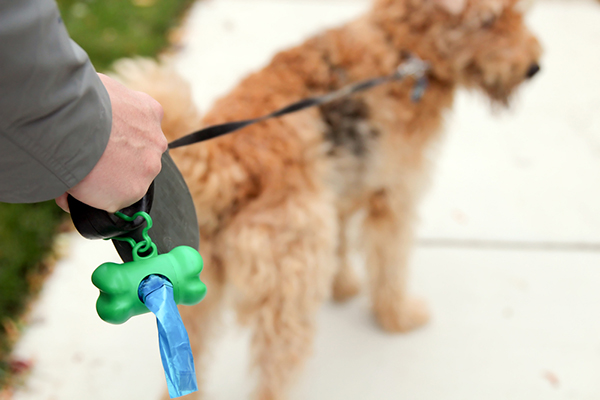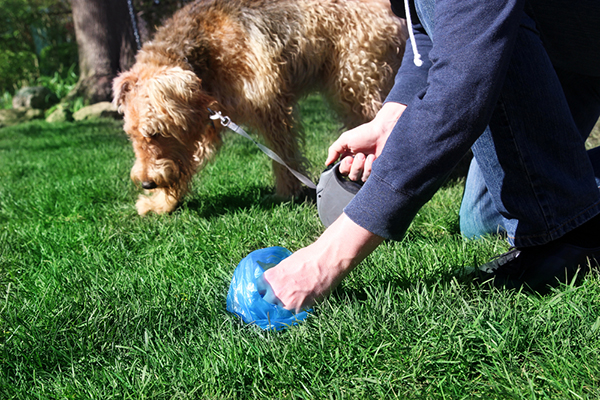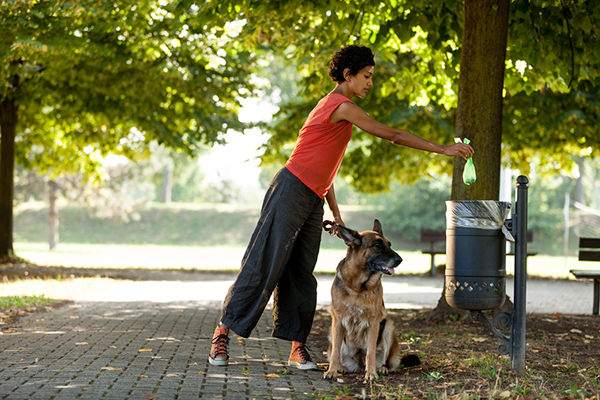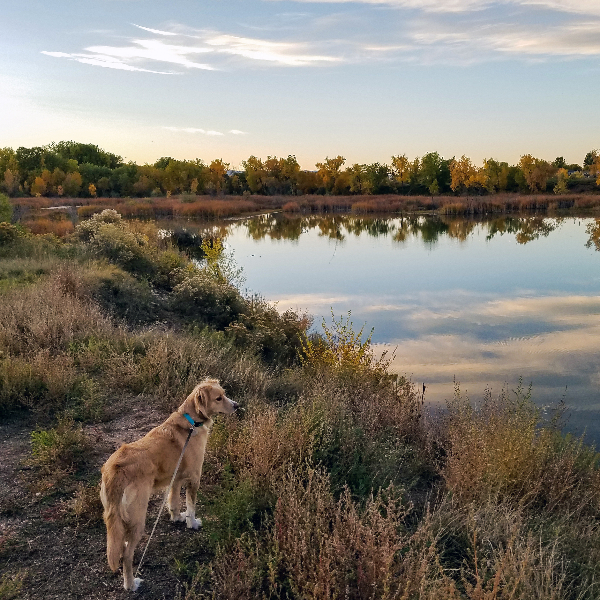There is No Such Thing as the Poop Fairy#
The "Poop Fairy" is the stuff of legend, flying under the radar in parks, natural areas, neighborhoods and schoolyards. They are said to follow dogs and their owners, picking up smelly presents left behind before flying off to the next canine creation. There is a widespread belief that they exist, and this seems to reassure some that cleaning up after their dog is optional.
If only that were the case. But, unfortunately, there is no "Poop Fairy." If you don’t pick it up, no one will.
Please Pick Up After Your Dog#
Poop happens, so be prepared and follow these three easy steps:

Plan ahead and take dog waste bags on your walk.

Pick it up after your dog does the deed.

Pitch it in a garbage can.
Did You Know?#
Fort Collins dogs create almost 18,000 pounds of dog waste each day. That’s 6.5 million pounds of dog waste a year (235 dump trucks worth!). Unless properly disposed of, dog waste washes down storm drains and into water bodies like rivers and lakes.
Why It Matters#

Polluting the Poudre
Rain and snowmelt wash dog waste into storm drains that are connected to rivers and lakes without treatment. Here it decomposes, releasing pollutants into our waterways.
Excess Nutrients
As dog waste decomposes, it releases excess phosphorus and nitrogen. While these elements are naturally occurring, high concentrations can result in algae and weed growth in our lakes and the Poudre River. This makes the water murky, green, smelly and often unusable for swimming, boating and fishing. It also creates low oxygen levels in the water and kills fish and other aquatic wildlife.
Spreading Bacteria
A single ounce of dog waste is home to about 23 million unhealthy bacteria and dog waste is the third largest contributor of bacterial pollution. Many pathogens can be spread from pets to humans, including E-coli, salmonella, giardia and parvovirus, among others. Parasite eggs dispersed in poop can survive for years in outdoor areas.
Myth or Reality?#
Test your knowledge! How much do you know about dogs?
-
Myth. Dog waste is high in nutrients like fertilizer, but when excess nutrients wash into waterways, they promote weed and algae growth and limit the oxygen available for fish and other aquatic organisms.
-
Reality. Dog waste also has 10 times as much bacteria and pathogens as cow waste!
-
Myth. Dog waste is the third largest contributor of bacterial pollution in urban watersheds. Scientists estimate that pet waste may be responsible for 20-30% of the harmful bacteria in our urban waterways.
-
Reality. More than 60% of your friends and neighbors know that picking up their dog‘s waste is part of being a responsible pet owner. This leaves lots of room for improvement! With an estimated 10 million pounds of dog poop generated per year in Fort Collins, we need more protection for local waters.
-
Myth. Bagged pet waste should be thrown in garbage cans, not in the grass or on the side of a trail. Try using a dog waste pouch that attaches to your leash to carry it to the next trash can.
-
Myth. There are several local and affordable pooper scooper businesses.
Did You Know?
Replacing old windows with double-pane, low-e windows, can bring down your Utilities bill.
Wearing an extra layer of clothing during the winter and lowering the thermostat a few degrees can help save money and energy.
When warm enough, you can save ~50 cents/load by hanging your laundry on a clothesline. Clotheslines are allowed everywhere in Fort Collins.